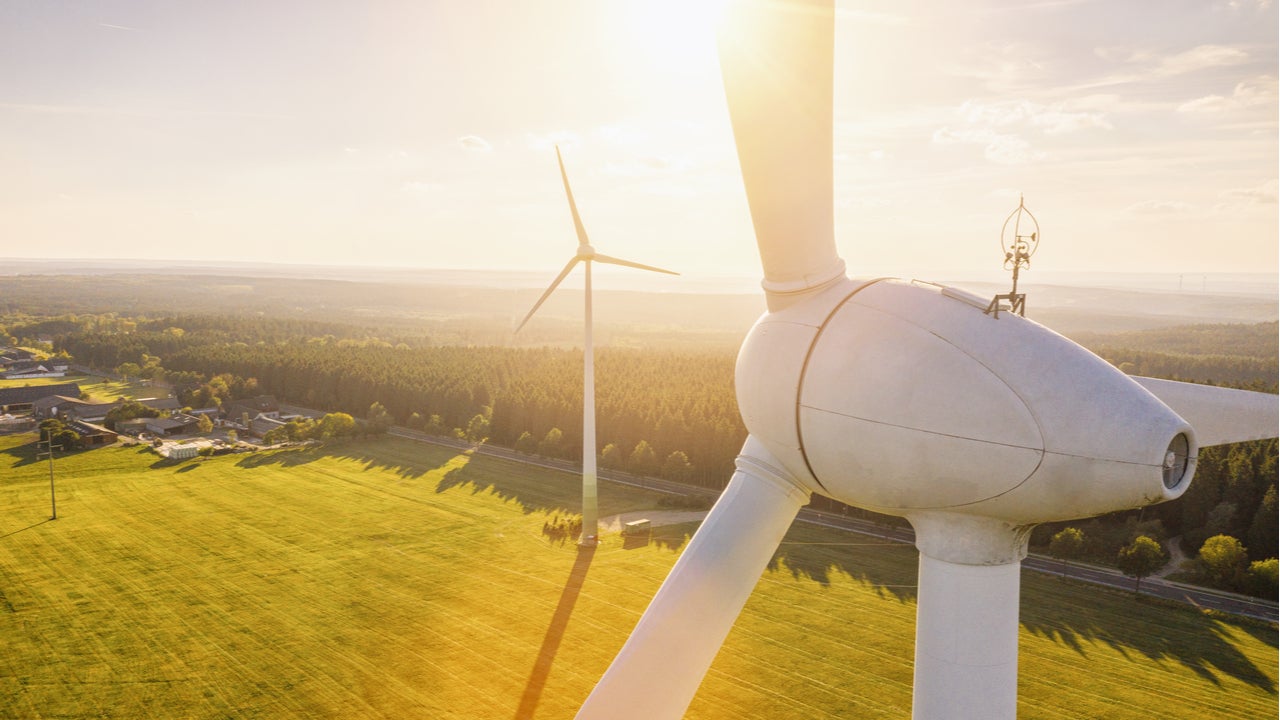The top tweets were chosen from influencers as tracked by GlobalData’s Influencer Platform, which is based on a scientific process that works on pre-defined parameters. Influencers are selected after a deep analysis of the influencer’s relevance, network strength, engagement, and leading discussions on new and emerging trends.
The most popular tweets on wind in Q2 2021: Top five
1. Eric Solheim’s tweet on Sydney running fully on wind and solar power
Eric Solheim, chief mentor of Global Alliance for Sustainable Planet, an organisation focused on the leveraging private finance for green transformation and sustainability, shared a video about Sydney city operating completely on wind and solar power. Sydney is home to Australia’s central business district and 250,000 people. It is the first city in the country to become carbon neutral in 2007.
Wind power will provide 75% of the city’s electricity and the rest will be provided by three solar farms. The shift towards renewable energy will save A$500,000 ($356,427) a year and offset 20,000 tonnes (t) of carbon emissions. The video added that more than 100 cities were 70% powered by renewable energy, including those in Nairobi, Kenya, Oslo, and Norway.
Bravo Australia 🇦🇺!
The city of Sydney now runs on 100% wind and solarpower. Who’s next?— Erik Solheim (@ErikSolheim) April 2, 2021
 GlobalData Strategic Intelligence
GlobalData Strategic IntelligenceUS Tariffs are shifting - will you react or anticipate?
Don’t let policy changes catch you off guard. Stay proactive with real-time data and expert analysis.
By GlobalData
Username: Eric Solheim
Twitter handle: @EricSolheim
Retweets: 112
Likes: 444
2. Mike Hudema’s tweet on Scotland’s wind energy
Mike Hudema, director of communications at CanopyPlanet, an environmental non-profit organisation, shared a video on Scotland generating enough wind energy to power an equivalent of more than 4.4 million homes between January and June 2020. The country’s goal is to produce half of its energy from renewable sources by 2030 and to completely reduce its carbon emissions by 2050.
Scotland’s achievement is part of Europe’s plan to fight climate change. Wind energy is the second largest power generator in the region and is home to some of the biggest wind projects including the largest offshore wind farm. Asia and Europe are global leaders in developing wind power, which accounts for 7% of the world’s electricity.
Wind turbines in Scotland now generated almost twice the entire country’s domestic power requirements.
We have the solutions. Let's implement them. #ActOnClimate #ClimateAction #Renewables #climate #energy #GreenNewDeal pic.twitter.com/xkKAt7zKjK
— Mike Hudema (@MikeHudema) June 27, 2021
Username: Mike Hudema
Twitter handle: @MikeHudema
Retweets: 219
Likes: 426
3. Mark Z. Jacobson’s tweet on 60% of power in Iowa produced from wind
Mark Z Jacobson, professor of civil and environmental engineering at Stanford University, tweeted an article on the state of Iowa producing nearly 60% of its energy from wind turbines. A total of 5,900 wind turbines supplied electricity to the state in 2020, which is an increase of 44% from 2019.
Wind power is the largest renewable energy source in the state, while it also has three hydroelectric plants. The remaining electricity is provided by biomass and solar power.
Amazing
Nearly 60% of Iowa's 2020 electricity came from its 5,900 wind turbines, up from 44% in 2019https://t.co/c4xOMHZUAP #WWS #WindWaterSolar @USCleanPower @WillettKempton @ProfStrachan @BrianVad @ChristianOnRE @dailykos @OrstedUS @Vestas @generalelectric
— Mark Z. Jacobson (@mzjacobson) April 9, 2021
Username: Mark Z. Jacobson
Twitter handle: @mzjacobson
Retweets: 108
Likes: 232
4. Michael Shellenberger’s tweet on lack of wind power during Texas grid failure
Michael Shellenberger, founder and president of Environmental Progress, a research and policy organisation, tweeted on his testimony before the United States House of Representatives Committee on the 2021 Texas grid failure. He noted that supporters of renewable energy argued in the past that the distributed and localised production of renewable energy produced more reliable electricity than the centralised power plants.
Shellenberger added that the power outages in Texas and California during heat waves, however, have exposed the unreliability of renewables as wind power was limited during those heat waves. He stated that construction of new transmission lines to weather-dependent energy projects would be unreliable in extreme weather conditions and incorporation of variable energy sources would lead to loss of traditional power plants.
Shellenberger observed that the increased consumption of unreliable energy sources would lead to high electricity costs and interfere with grid resilience.
Renewables advocates claimed solar, wind, batteries would make natural gas unnecessary but blackouts in California in 2020 & Texas in 2021 proved that weather-dependent energies require more natural gas infrastructure not less, further raising costs https://t.co/1fDLwHfy7P
— Michael Shellenberger (@ShellenbergerMD) May 25, 2021
Username: Michael Shellenberger
Twitter handle: @ShellenbergerMD
Retweets: 58
Likes: 177
5. Assaad Razzouk’s tweet on global renewable energy capacity additions in 2020
Assaad Razzouk, co-founder of Sindicatum Sustainable Resources, a global sustainable resources company, shared an article on global renewable energy capacity additions in 2020, according to data released by the International Renewable Energy Agency (IRENA). More than 260GW of renewable energy capacity was added in 2020, which is equivalent to approximately 50% of that added in 2019.
Further, 91% of the new capacity came from wind and solar energy. Wind energy capacity expansion doubled in 2020 to 111GW from 58GW in 2019. China added the highest capacity of 72GW, followed by the US at 14GW. Offshore wind accounted for 5% of the total wind capacity added during the year.
Global renewable energy capacity additions in 2020 beat estimates and all previous records at 260GW
– Up a huge 45% on capacity expansion in 2019
– More than 80% of all new electricity capacity added was renewable
– Solar and wind = 91% of new renewableshttps://t.co/2V2JacYEuX pic.twitter.com/5n5PYtTgeb— Assaad Razzouk (@AssaadRazzouk) April 6, 2021
Username: Assaad Razzouk
Twitter handle: @AssaadRazzouk
Retweets: 61
Likes: 105






